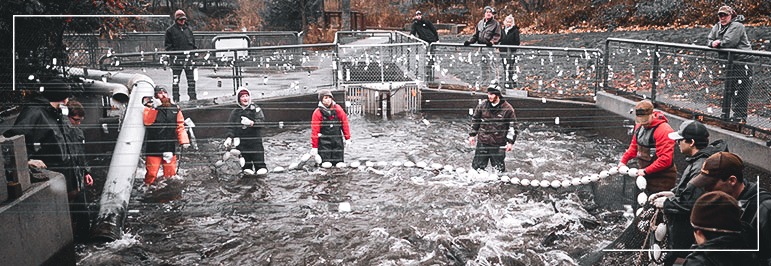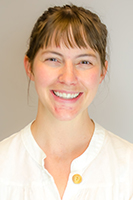Fisheries Science

Fisheries Field & Lab Techniques - Certificate
Have you recently graduated with a degree in the natural sciences but find it difficult to qualify for fisheries jobs? Do you want to gain more experience with field operations to survey fish populations and conduct habitat surveys? Do you have a passion for aquatic environments and want a career in resource management? If any of this rings true, then the Fisheries Field and Lab Techniques Certificate is meant for you.
Intended for students with prior college education in a related field and/or relevant work experience, this advanced-level certificate skips the basics and dives straight into the technical expertise to design and conduct fisheries surveys with a focus on population and habitat assessments. Course topics include advanced sampling techniques, fisheries ecology and conservation, quantitative assessments, and stock enhancement principles. Students may also customize their certificate plan with several elective courses ranging from animal genetics to aquatic chemistry to data analysis and more.
Fisheries management is increasingly important as our waterways are developed, human populations increase, and aquatic species become imperiled. Managers seek qualified applicants with direct hands-on experience with the variety of field and lab sampling required to complete robust surveys for management purposes.
Let’s help you meet your goals and kick-start your career in sustainable fisheries. Meet now with an academic advisor to create a customized certificate plan to get you started.
Included in the AAS- Fisheries Science degree
Employment Information
Data are provided on a program (not credential) level
71% BTC graduate placement rate1
$49,303 starting annual wage2
$56,597 average annual wage2
$66,348 potential annual wage2
Entry Information
When Can I Start?
This program typically starts in Fall quarter.
What are the Minimum Entry Requirements?
A completed college admissions application and placement in English and Math. BTC uses a Guided Self-Placement process to help you choose the best starting point for your English and Math courses. Your selections will determine whether you begin with program coursework or complete prerequisites classes first.
To get started or for help determining your English and math placement, contact the Outreach department at Outreach@btc.edu
What are My Next Steps?
Classes
Total Program Credits: 40
Core Courses for Program
AQUA 122 Principles of Fisheries Science 5 CR TOTAL Core Course Credits 5 CR Program Specialty
AQUA 243 Fisheries Ecology with Lab 5 CR AQUA 244 Principles of Field Sampling 5 CR AQUA 245 Field Sampling Practicum 3 CR AQUA 251 Fisheries Conservation 5 CR TOTAL Program Specialty Course Credits 18 CR Electives
Elective Courses (Select any from this list.) AQUA 131 Aquatic Chemistry with Lab 5 CR AQUA 241 Fisheries Stock Enhancement 2 CR AQUA 242 Fisheries Stock Enhancement Practicum 3 CR AQUA 271 Data Analysis for Aquatic Sciences 5 CR AQUA 272 Introduction to GIS 5 CR AQUA 273 Animal Genetics with Lab 5 CR AQUA 274 Organismal Biology with Lab 5 CR AQUA 298 Fisheries Science Internship 6 CR OCEA& 101 Introduction to Oceanography with Lab 5 CR TOTAL Elective Course Credits 17 CR
Program Outcomes
After successfully completing the certificate, students will be able to:
- Demonstrate proper sampling techniques to assess aquatic populations and habitats.
- Explain how fish populations interact with each other and their environments.
- Design fisheries surveys for monitoring purposes.
- Conduct workplace operations in a safe and professional manner with an emphasis on teamwork skills.
Employment Outlook
Faculty & Support

Brittany Palm
Fisheries & Aquaculture Sciences
Sara Smith
Fisheries & Aquaculture Sciences
Kai Rick
Hatchery Operations Specialist
Steeve Pomerleau
Fisheries & Aquaculture
Kai Rick
Hatchery Operations Specialist
Steeve Pomerleau
Fisheries & AquacultureContacts
If you have questions about this program or want help with the admissions steps to Bellingham Technical College, please email outreach@btc.edu.
Current students wanting academic planning and support, can connect with the program Instructor(s) or email FisheriesNav@btc.edu
